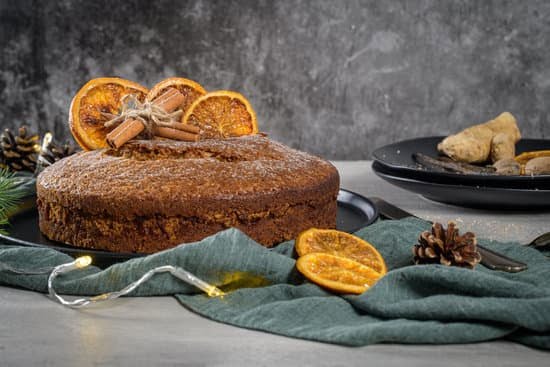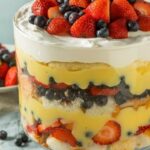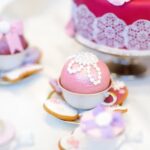Are you looking to elevate your cake decorating skills and create stunning baked masterpieces? Look no further than the humble cake decorating tip. Whether you’re a novice baker or an experienced pastry chef, the right cake decorating tip can make all the difference in adding intricate designs and texture to your creations.
When it comes to cake decorating, having the essential tools is key. From piping bags and tips to offset spatulas and turntables, each tool plays a crucial role in bringing your vision to life. But before diving into the world of cake decorating, it’s important to understand the different types of frosting and how they can enhance the overall look and taste of your cakes.
In this article, we’ll explore everything you need to know about cake decorating tips, from choosing the right frosting for your cake to mastering piping techniques and creating stunning designs with fondant. We’ll also cover troubleshooting common cake decorating issues and provide resources for further inspiration and education. So, whether you’re looking to impress at your next celebration or simply want to hone your baking skills, let’s dive into the art of cake decoration.
Essential Tools for Cake Decorating
When it comes to cake decorating, having the right tools is essential to creating beautiful and professional-looking designs. From piping bags to offset spatulas, these tools will help you bring your cake decorating visions to life.
Piping Bags and Tips
One of the most important tools for cake decorating is the piping bag and tips. Piping bags come in various sizes and materials, such as disposable plastic or reusable cloth.
Paired with different tips, piping bags allow you to create intricate designs and textures on your cakes using buttercream or royal icing. Whether it’s a classic rosette design or delicate lace patterns, having a variety of tips at your disposal will give you the freedom to experiment with different techniques.
Offset Spatula
Another essential tool for cake decorating is the offset spatula. This versatile tool allows you to smoothly spread frosting on your cakes and create clean, straight edges. It’s also useful for lifting delicate decorations or smoothing out any imperfections on the surface of your cake. Investing in a quality offset spatula will make the process of frosting your cakes much easier and more efficient.
Turntable
A turntable is a must-have for any cake decorator. This rotating stand allows you to easily turn and access all sides of your cake while decorating, ensuring that every angle receives attention to detail. With a turntable, you can achieve even frosting and precise decorations without having to constantly adjust the position of your cake.
These essential tools are just a starting point for any aspiring cake decorator. By investing in high-quality equipment and continually practicing with these tools, you’ll be well on your way to creating stunning works of edible art.
Choosing the Right Frosting for Your Cake
When it comes to choosing the right frosting for your cake, there are several factors to consider. The type of frosting can greatly impact the overall look and taste of the finished product, so it’s important to choose the best option for your specific cake decorating needs. One popular choice is buttercream frosting, which is versatile and easy to work with. It can be used for piping designs, creating smooth finishes, or adding texture to your cake.
Another popular option is cream cheese frosting, which has a slightly tangy flavor that pairs well with a variety of cake flavors. This type of frosting is especially popular for red velvet cakes and carrot cakes. For those looking for a lighter option, whipped cream frosting is a great choice. It’s fluffy and not too sweet, making it a perfect match for fruit-filled or light sponge cakes.
Each type of frosting has its own unique characteristics and uses in cake decorating, so it’s important to consider the flavor and design you have in mind for your cake before choosing the right one. Additionally, it’s helpful to consider the climate in which you’ll be serving your cake, as some frostings hold up better in warmer temperatures than others.
| Types of Frosting | Best For |
|---|---|
| Buttercream | Piping designs, smooth finishes |
| Cream Cheese | Red velvet cakes, carrot cakes |
| Whipped Cream | Fruit-filled or light sponge cakes |
Step-by-Step Guide to Piping Techniques
Piping techniques are essential for creating beautifully decorated cakes. Whether you’re a beginner or an experienced baker, using the right cake decorating tip can make all the difference in achieving professional-looking results.
One of the most important tools for piping is the piping bag, which comes in disposable and reusable options. Additionally, having a variety of cake decorating tips on hand is necessary for creating different designs. The Wilton 1M tip, for example, is perfect for creating beautiful rosettes and swirls, while the small round tip is ideal for writing messages or adding intricate details.
To start practicing your piping skills, begin by preparing your frosting and filling the piping bag with the desired icing. Hold the bag at a 45-degree angle to the surface of the cake and apply even pressure to guide the frosting out through the tip. Start with simple designs such as dots, lines, and rosettes before progressing to more complex patterns.
For those looking to take their piping skills up a notch, experimenting with different colored frostings and using multiple cake decorating tips can create stunning multi-dimensional designs. With practice and patience, mastering piping techniques can elevate your cake decorating game to new heights.
Creating Stunning Cake Designs With Fondant
What Is Fondant?
Fondant is a versatile icing that can be rolled out into a smooth, seamless sheet to cover cakes, or it can be shaped and molded to create intricate designs. It is made from sugar, water, and gelatin, giving it a pliable texture that allows for endless creative possibilities. Fondant comes in a variety of colors and flavors, making it a popular choice for cake decorators.
Working With Fondant
When working with fondant, it’s important to start with a smooth, clean surface. Roll out the fondant on a surface dusted with powdered sugar to prevent sticking. Carefully lift the fondant over the cake and gently smooth it down the sides using a fondant smoother or your hands. Any air bubbles can be smoothed out with a fondant smoother or pin.
Creating Designs With Fondant
Fondant allows for intricate designs such as ruffles, flowers, bows, and other decorations that can take your cake to the next level. Use silicone molds, cutters, and shaping tools to create stunning details on your cake. With practice and creativity, you can use fondant to bring any design idea to life on your cakes.
Incorporating fondant into your cake decorating repertoire opens up endless opportunities for creativity and innovation. Whether you’re creating an elegant wedding cake or a playful birthday confection, mastering the art of working with fondant will elevate your cake designs to new heights.
Incorporating Edible Decorations
When it comes to cake decorating, edible decorations add an extra layer of creativity and flavor to your masterpiece. From fresh fruits to chocolate shavings, the possibilities are endless. Edible decorations not only enhance the visual appeal of your cake but also provide different textures and tastes that complement the overall dessert experience.
One popular edible decoration for cakes is fresh fruit. Berries, sliced kiwi, and tropical fruits can be strategically placed on top of the cake or around the edges to add a burst of color and freshness.
Another option is edible flowers, which can elevate the elegance of a cake with their delicate appearance and subtle flavors. It’s important to ensure that whatever edible decorations you choose complement the flavor profile of the cake to create a harmonious flavor experience for your guests.
For those looking to add a touch of decadence to their cakes, consider using chocolate as an edible decoration. Chocolate curls, shavings, or even molded shapes can transform a simple cake into a sophisticated dessert.
Additionally, nuts such as almonds, pistachios, or pecans can be used as both a decorative element and a flavorful addition to the cake. When incorporating edible decorations into your cake design, it’s essential to consider the stability and placement of each element to ensure they enhance the overall aesthetic without compromising the structural integrity of the cake.
Lastly, when using edible decorations in cake decorating, it’s important to consider any dietary restrictions or allergies that your guests may have. Be sure to communicate clearly about any potential allergens present in your edible decorations so that everyone can enjoy your beautiful creation without worry.
| Edible Decoration | Description |
|---|---|
| Fresh Fruit | Berries, sliced kiwi, tropical fruits |
| Edible Flowers | Delicate appearance and subtle flavors |
| Chocolate | Curls, shavings, molded shapes |
Troubleshooting Common Cake Decorating Issues
When it comes to cake decorating, it’s inevitable that you’ll encounter some issues along the way. Whether it’s a lumpy frosting, a cracked fondant, or a collapsed shape, knowing how to troubleshoot these common problems can save you from a lot of frustration. Here are some tips for dealing with common cake decorating mishaps:
1. Lumpy Frosting: If your frosting turns out lumpy, try sifting it before applying it to the cake. This will help break up any clumps and ensure a smooth finish.
2. Cracked Fondant: To prevent fondant from cracking, make sure your cake is properly covered with a thin layer of frosting before applying the fondant. You can also try kneading the fondant more to make it more pliable and less prone to cracking.
3. Collapsed Shape: If your cake shape collapses during decorating, try using dowel rods or supports within the layers of the cake to give it more stability.
In addition to these specific troubleshooting tips, it’s also important to practice patience and perseverance when encountering cake decorating issues. More often than not, there is a solution to be found with a little creativity and problem-solving skills. Don’t be discouraged if things don’t go perfectly the first time – learning through trial and error is all part of the process of mastering the art of cake decorating.
Showcasing Your Masterpiece
Once you have perfected your cake decorating skills, it’s time to showcase your masterpiece with stunning presentation and display techniques. The way you present your cake can make all the difference in making it truly stand out. Here are some essential tips for showcasing your beautifully decorated cake:
- Use a cake stand: Elevate your cake by placing it on a decorative cake stand. This not only adds height and elegance to your creation but also makes it easier for guests to admire.
- Opt for complementary decorations: Consider adding fresh flowers, edible pearls, or even glitter to enhance the overall look of your cake. Just be sure that any decorations are safe for consumption.
- Consider the backdrop: When displaying your cake, think about the background as well. A plain white or colorful tablecloth can help make your creation pop.
In addition to these tips, you may also want to consider using appropriate lighting to highlight certain aspects of your design and create a visually stunning display. Experiment with different angles and see how the light enhances the details of your cake.
Remember that presentation is just as important as the decorating process itself. By following these simple yet effective presentation and display techniques, you can truly showcase the beauty of your cake decorating masterpiece.
Resources for Further Cake Decorating Inspiration and Education
In conclusion, mastering the art of cake decorating can be a highly rewarding and enjoyable experience. With the right tools, frosting, piping techniques, fondant skills, and creative edible decorations, you can turn a simple cake into a stunning masterpiece. Troubleshooting common cake decorating issues is also essential to ensure that your final creation looks as good as it tastes.
As you continue on your cake decorating journey, it’s important to seek further inspiration and education. Whether you’re interested in advanced piping techniques, innovative fondant designs, or incorporating trendy edible decorations, there are countless resources available to help you refine your skills. From online tutorials and blogs to workshops and classes, there are endless opportunities to learn and grow as a cake decorator.
So if you have a passion for creating beautiful and delicious cakes, don’t hesitate to explore the various resources that can take your skills to the next level. There is always something new to learn in the world of cake decorating, and with dedication and practice, you can become an expert in no time.
Remember that with the right cake decorating tip in hand – along with plenty of creativity – there’s no limit to what you can achieve in this deliciously artistic craft.
Frequently Asked Questions
What Are the Best Tips for Cake Decorating?
The best tips for cake decorating include ensuring that your cake is cooled completely before frosting, using a turntable for even frosting application, and investing in quality piping tools for intricate designs. It’s also important to practice and have patience when learning new techniques.
What Are Cake Decorating Tips Called?
Cake decorating tips are called piping tips or icing tips. These small, often metal, attachments are used with pastry bags to create different shapes and patterns with frosting or icing on cakes, cupcakes, or other baked goods. There are various sizes and styles available to achieve different effects.
What Is a Tip When You Are Frosting a Cake?
A tip when you are frosting a cake is to start with a crumb coat, which is a thin layer of frosting applied to the entire cake to seal in any loose crumbs. This helps to create a smooth base for the final layer of frosting or fondant.
Additionally, using an offset spatula can help achieve an even finish when spreading the frosting.

Welcome to our cake decorating blog! My name is Destiny Flores, and I am the proud owner of a cake decorating business named Cake Karma. Our mission is to provide delicious, beautiful cakes for all occasions. We specialize in creating custom cakes that are tailored specifically to each customer’s individual needs and tastes.





